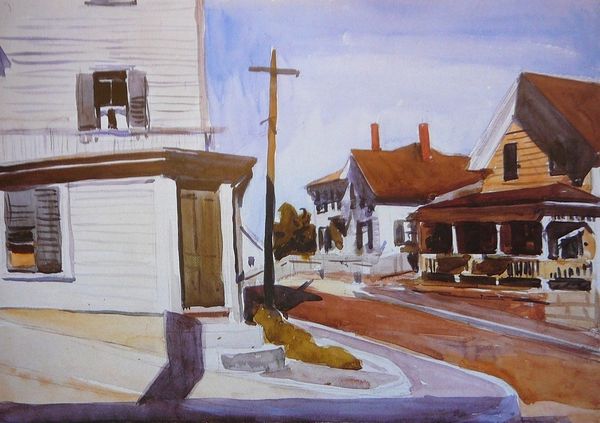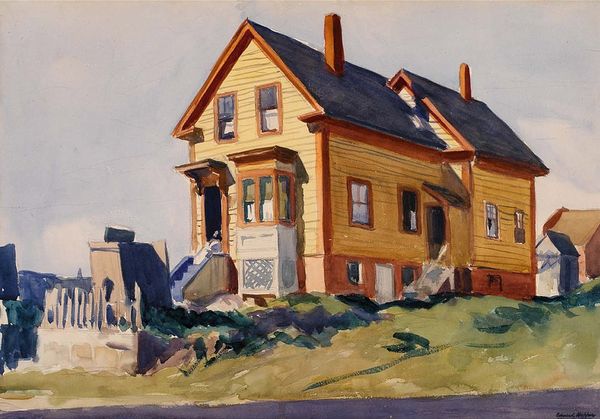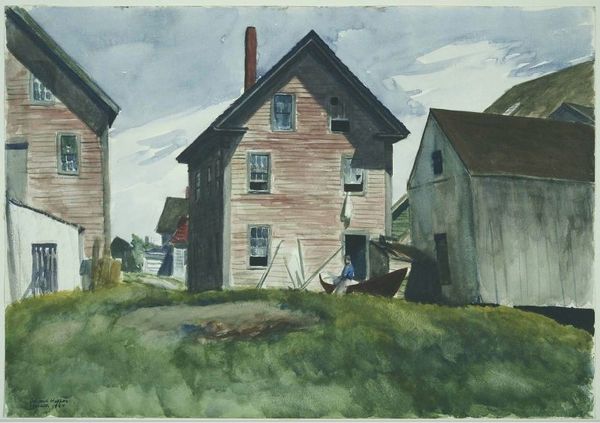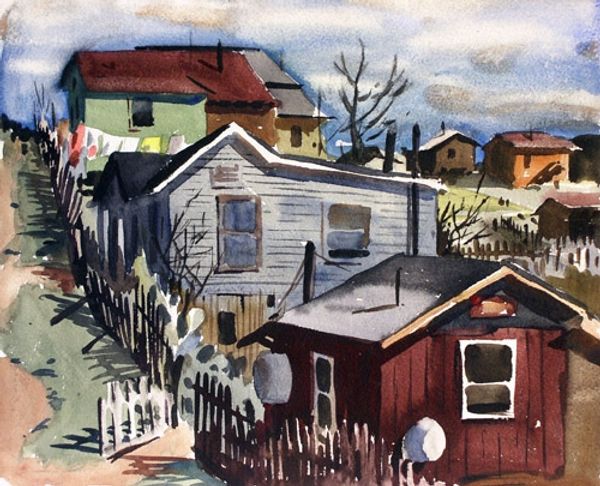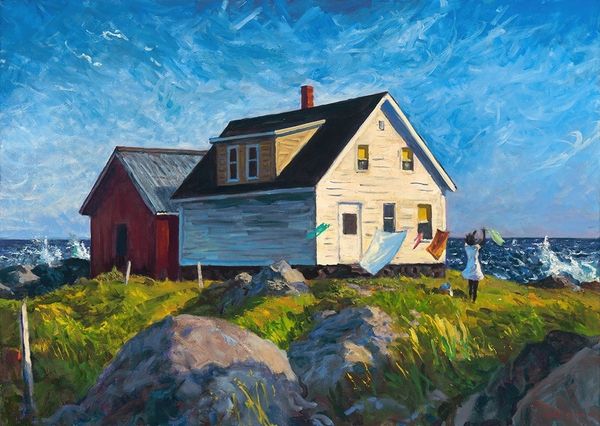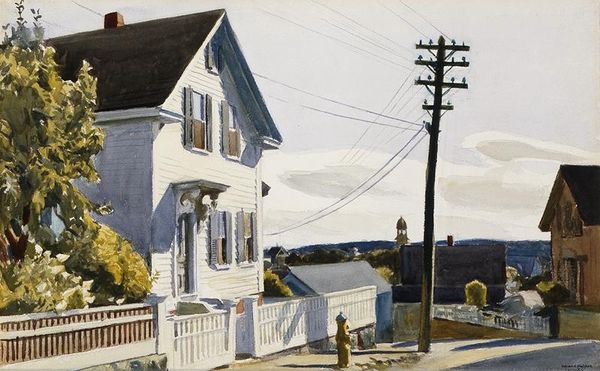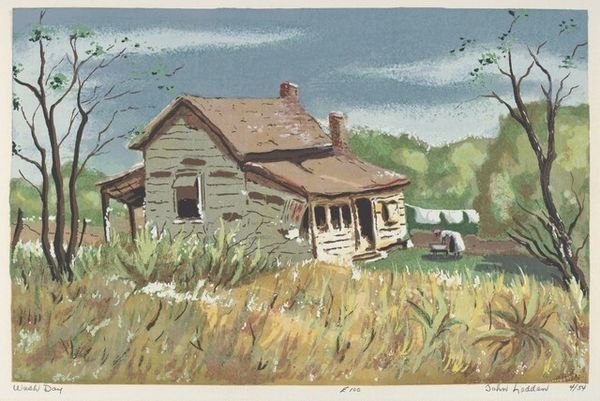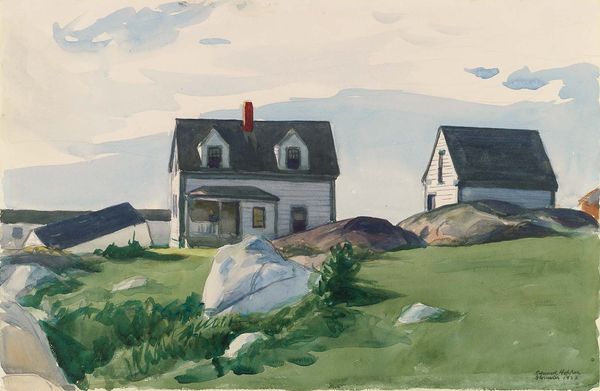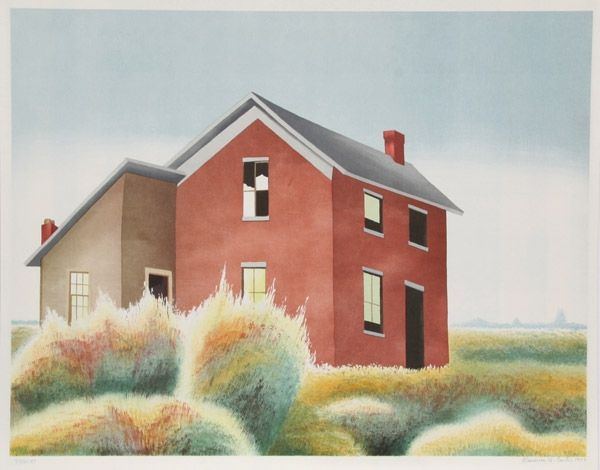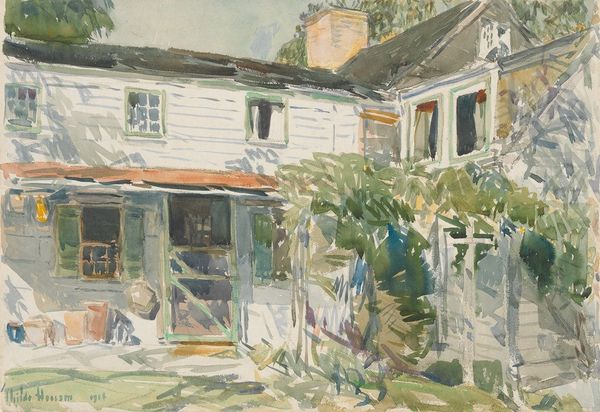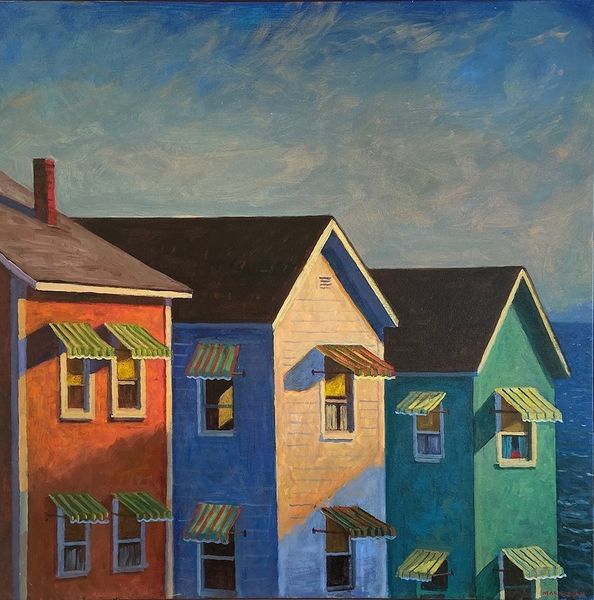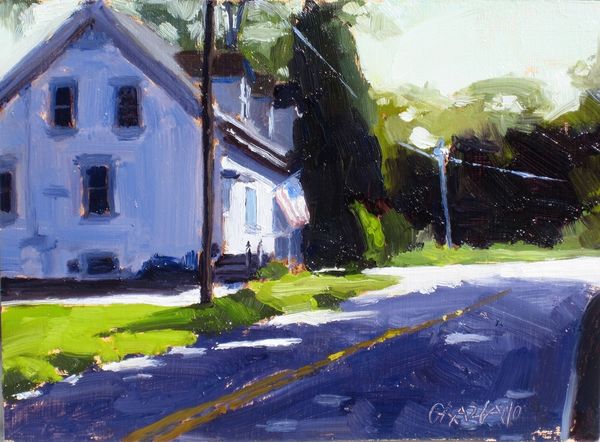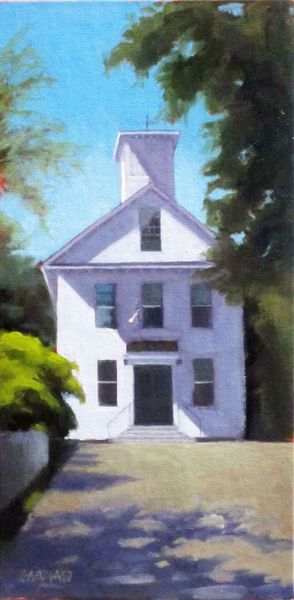
painting, watercolor
#
painting
#
landscape
#
house
#
oil painting
#
watercolor
#
cityscape
#
watercolour illustration
#
modernism
#
watercolor
#
realism
#
building
Copyright: Public domain US
Editor: This is Edward Hopper’s “White House with Dormer Window,” created in 1923. It’s a watercolor painting, and I'm struck by the ordinariness of the subject, but also by how Hopper’s choice of medium and the angle of the scene—especially the way it foregrounds this electrical pole— gives it an odd, slightly alienated quality. What's your take on it? Curator: I'm immediately drawn to the way Hopper deploys watercolor. It wasn’t just a preliminary medium for larger oils. Its inherent transparency and fluidity here directly engage with the subject. These houses, this landscape… they’re products of specific economic and social conditions that led to the construction and maintenance of these structures. Editor: Could you elaborate on those conditions? Curator: Think about the labor involved. From the felling of trees for the timber to the manufacture and transport of the paint, every element of this scene and its representation speaks to an intricate web of production. Even the utility pole… a stark symbol of industrialized life intersecting with the domestic sphere. Hopper is not merely depicting a house; he’s showing us a manufactured environment. Editor: So you're saying he’s less interested in the *ideal* of home and more interested in the means through which that idea manifests materially? Curator: Precisely! And what about the consumerism inherent in maintaining these homes, buying the paint to keep them "white?" How might Hopper be subtly critiquing the promises of the American Dream by focusing on such a seemingly mundane, manufactured, scene? He shows us how everyday materials shape our lived experience. Editor: That makes me see the painting very differently. I initially saw the houses as fairly simple architectural structures, but now understand the layers of material processes and societal influences at work within this seemingly calm scene. Curator: Yes. By looking at materials and methods, we can explore far more than the immediate aesthetic qualities.
Comments
No comments
Be the first to comment and join the conversation on the ultimate creative platform.
